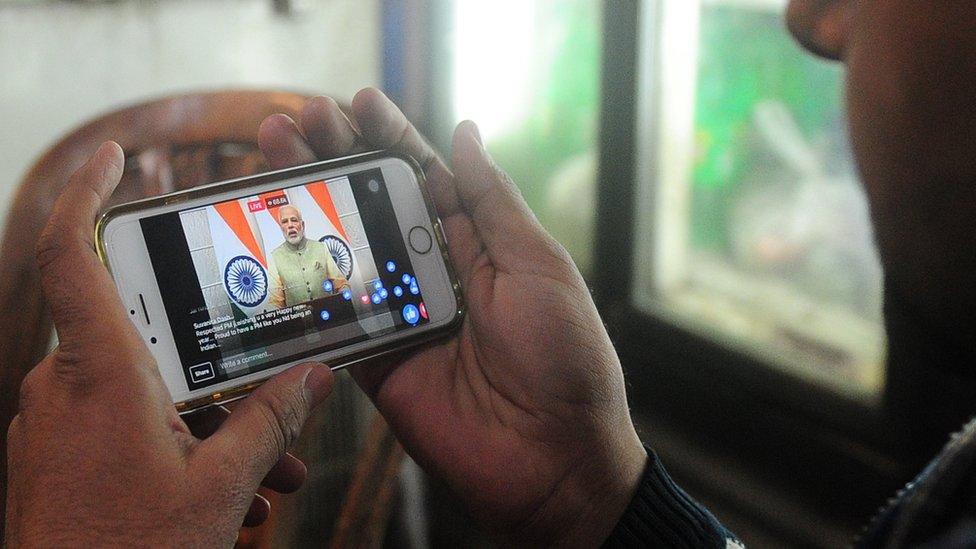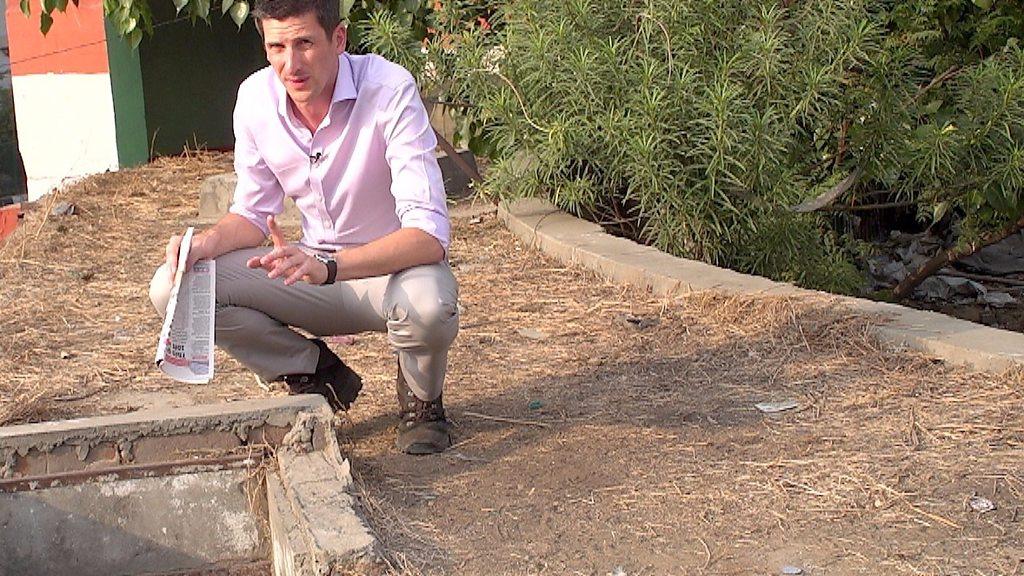India WhatsApp 'child kidnap' rumours claim two more victims
- Published

Abijeet Nath (L) and Nilotpal Das (R) stopped to ask for directions when a mob attacked them
Indian police have arrested 16 people after two men became the latest victims of hysteria over WhatsApp rumours of child kidnappers.
The men had stopped to ask directions in north-eastern Assam state when they were beaten to death by a large mob.
Rumours of child kidnappings are spreading across India over WhatsApp, and have already led to the deaths of seven other people in the past month.
Police say it is proving hard to debunk the messages on social media.
The two latest victims have been identified as Nilotpal Das, an audio engineer and Abijeet Nath, a digital artist - both residents of Guwahati, the largest city in Assam.
Police say the pair were attacked when they stopped at a village to ask for directions. Residents reportedly believed they were "kidnappers" they had been warned about on WhatsApp.
A video of the attack went viral over the weekend, where one of the men can be seen pleading for his life. On Sunday, students and activists filled the streets of Guwahati to protest against the killings.
What is fuelling the rumours?
People are citing a video that is being spread on WhatsApp that purportedly shows a child being abducted.
In Bangalore, where two people were killed last month, a local showed BBC correspondent Dan Johnson the video on his mobile phone. In it, two men on a motorcycle pull up to a group of children. One of them grabs a child and they ride off.
But the video is not real. It's not even from India. An unedited version of the video shows it is a child safety film from Pakistan, designed to create awareness. The last segment of the video, which shows one of the men holding up a sign that explains the incident, has been edited out in the version being spread on WhatsApp.
The video is accompanied by text messages that talk about "kidnappers" arriving in the city with the aim of snatching children.
Though it was initially spread via the messaging app, the panic was further fuelled when some regional media channels picked up the rumours, lending them credibility.
This has prompted locals to attack those who look unfamiliar or cannot speak the regional language.
What are the authorities doing about this?
"When rumours start circulating on social media, it takes some time to stop them completely," senior Assam police official Mukesh Agarwal told BBC Hindi's Dilip Kumar Sharma, adding that police were watching various social media sites to try to stop the spread of the messages.
Officials elsewhere in India have urged people not to believe messages linked to child abductions.
Last month, police in the southern city of Hyderabad marched alongside residents with loudspeakers chanting "don't believe the rumours".
In Tamil Nadu state, where a string of violent incidents has been reported in recent months, authorities have begun awareness drives to counter the rumours.
In other southern states like Karnataka, police have set up social media control rooms from where they monitor posts, viral messages and videos.
Police in Telangana have issued warnings and have also arrested people who circulated false video messages online.
So far, officials are yet to find any incidents of child abduction related to the spate of messages and videos being shared online.

Deaths linked to WhatsApp rumours
April: A man in the southern state of Tamil Nadu is beaten to death by a mob after he is seen aimlessly wandering the streets
May:
A 55-year old woman in Tamil Nadu is lynched for giving sweets to children; police arrest 30 people
A man in the southern state of Andhra Pradesh is lynched for speaking Hindi and not the local language, Telugu
A man in neighbouring Telangana is killed by a mob while entering a mango orchard at night
Another man in Telangana is lynched when visiting a village to see his relatives
A man in the southern city of Bangalore, who had moved there recently, is tied up with rope and beaten to death with cricket bats
A transgender woman is lynched in Hyderabad
June: Two men are lynched in north-eastern Assam after stopping their car to ask for directions

- Published24 July 2017

- Published25 May 2018
